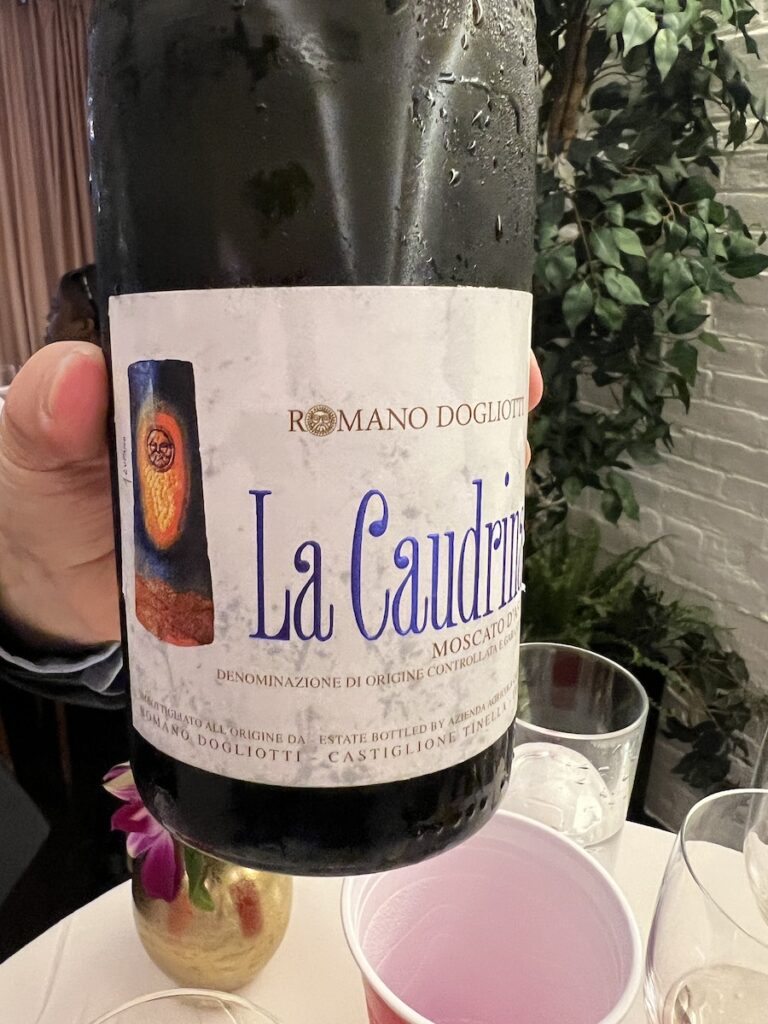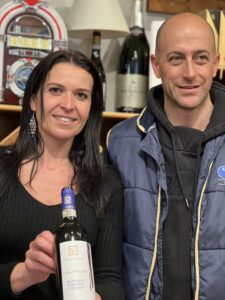
Moscato D’Asti
What’s your Moscato D’Asti experience?
Here’s mine – well, not exactly ‘my experience sipping Moscato D’Asti,’ but rather, the first time I choose a bottle of this wine to give my cousin’s new girlfriend
I had never met her before, but I was told she just turned 21
For this picnic, I had already purchased pricey French Champagne, then various dry white and red wines from different countries
But I brought that bottle of Moscato I had been saving for just such an occasion.
It turns out she didn’t drink wine normally, but as soon as she tasted this Moscato D’Asti she couldn’t get enough and ended up drinking the entire bottle (why not, it’s only 5% abv on average).
IEEM USA Moscato D'Asti Panel in NYC

Today IEEM invited me to a master tasting of Moscato D’Asti with the producers from the region. They included the owners of Coppo, Michele Chiarlo, Caudrina, I Vignai di Santo Stefano – Ceretto
The producers spoke about their individual Moscato D’Asti, made in the region’s traditional way which uses the “Charmat” technique to stop the alcoholic fermentation and preserve the sugar content
The producers spoke about their individual terroir, and how their families became involved (typically back in the 1880s)
The Story of Moscato D’Asti
Cloaked in the lush green tapestry of flourishing vines, where every undulation speaks volumes about the rich history of Italian viticulture. This is the heartland of the enigmatic Moscato D’Asti, a region as enthralling as the liquid gem it gives birth to.
Moscato D’Asti, a celebrated Italian sparkling wine, is adored worldwide for its distinct sweet, aromatic profile. The wine’s luscious aura can be traced back to its unique provenance – the prestigious Denominazione di Origine Controllata e Garantita (DOCG), the top tier of Italian wine classification.

The stage for Moscato D’Asti’s symphony is set in the sunny, calcareous soils that dot the slopes of Piedmont.
Moscato D'Asti

The stage for Moscato D’Asti’s symphony is set in the sunny, calcareous soils that dot the slopes of Piedmont.
This terroir, a wine’s very birthplace, is a result of the geological ballet of the Alps and the Apennines, gifting the region its unique combination of calcareous marls and sandstone.
As a wine lover, you already realize that wine is not just the juice of fermented grapes Instead, it’s living, breathing testament of its homeland’s geography and climate.
The unique mix of limestone and clay in Piedmont gives Moscato D’Asti its delightful minerality, while the cooling winds from the Alps help retain the much-needed acidity to balance its inherent sweetness.
A glass of Moscato D’Asti is a canvas painted with an enticing palette of floral and fruity aromas.
The dance begins with the mesmerizing perfume of elderflower and honeysuckle.
As the performance unfolds, an abundance of ripe peach, pear, and citrus notes waltz in, twirling harmoniously with the sweetness, like a charming couple gliding effortlessly across the dance floor.

Underlying these effervescent notes, you’ll often discover a delicate layer of orange blossom and honey, a sweet whisper of the nectar that the Moscato Bianco grapes hold within their skin.
The Moscato Bianco grape, also known as Muscat à Petits Grains, is the soul of Moscato D’Asti.
This grape variety, while one of the oldest known to humankind, thrives in the sunlight of the Piedmontese summer.
Harvested manually, the bunches are carefully selected to ensure that only the highest quality of grapes, ripe with the richness of Italian sunshine, contribute to the ambrosial brew.
Moscato D'Asti Production

It begins with a brief cold maceration, which allows the grape skin’s essence to permeate the must, infusing it with its distinctive aromatic character.
Fermentation is then initiated in temperature-controlled autoclaves to capture the wine’s natural effervescence. It’s interrupted halfway through by chilling the wine, leaving a fair amount of residual sugar, which gifts Moscato D’Asti its signature sweetness.
The wine is then filtered and bottled under pressure to preserve its characteristic sparkle. The result? A lightly sparkling, sweet, and aromatic wine that dances on the palate.

Enjoying Moscato D'Asti
In every bottle of Moscato D’Asti, there lies a poem of the Piedmontese terroir, an ode to the Italian tradition of winemaking, and a sonnet dedicated to the Moscato Bianco grape.
It’s a wine that invites the drinker to savor the joyous flavors of Italy, one sip at a time.
P.S.
D’Asti with Food
You probably love D’Asti on its own. I certainly do!
Yet you will find that D’Asti pairs with various types of food – everything from ‘brunch’ type food like omelets, salads, various egg dishes Many like it with “spicy” Asian food and sushi from Japan




